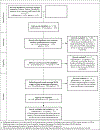Practices for monitoring and responding to incoming data on self-injurious thoughts and behaviors in intensive longitudinal studies: A systematic review
- PMID: 34763126
- PMCID: PMC8663717
- DOI: 10.1016/j.cpr.2021.102098
Practices for monitoring and responding to incoming data on self-injurious thoughts and behaviors in intensive longitudinal studies: A systematic review
Abstract
Advancements in the understanding and prevention of self-injurious thoughts and behaviors (SITBs) are urgently needed. Intensive longitudinal data collection methods-such as ecological momentary assessment-capture fine-grained, "real-world" information about SITBs as they occur and thus have the potential to narrow this gap. However, collecting real-time data on SITBs presents complex ethical and practical considerations, including about whether and how to monitor and respond to incoming information about SITBs from suicidal or self-injuring individuals during the study. We conducted a systematic review of protocols for monitoring and responding to incoming data in previous and ongoing intensive longitudinal studies of SITBs. Across the 61 included unique studies/samples, there was no clear most common approach to managing these ethical and safety considerations. For example, studies were fairly evenly split between either using automated notifications triggered by specific survey responses (e.g., indicating current suicide risk) or monitoring and intervening upon (generally with a phone-based risk assessment) incoming responses (36%), using both automated notifications and monitoring/intervening (35%), or neither using automated notifications nor monitoring/intervening (29%). Certain study characteristics appeared to influence the safety practices used. Future research that systematically evaluates optimal, feasible strategies for managing risk in real-time monitoring research on SITBs is needed.
Keywords: Ecological momentary assessment; Mobile health; Self-injury; Suicide.
Copyright © 2021 Elsevier Ltd. All rights reserved.
Conflict of interest statement
Author Disclosure
Conflict of Interest
Dr. Nock receives textbook royalties from Macmillan and Pearson publishers and has been a paid consultant in the past year for Microsoft and for a legal case regarding a death by suicide. He is an unpaid scientific advisor for TalkLife and Empatica. No other authors have any conflicts of interest to report.
References
-
- Barlow DH, Nock MK, & Hersen M (2009). Single case experimental designs: Strategies for studying behavior change. Allyn and Bacon.
Publication types
MeSH terms
Grants and funding
LinkOut - more resources
Full Text Sources
Medical
Miscellaneous


